Mine shafts
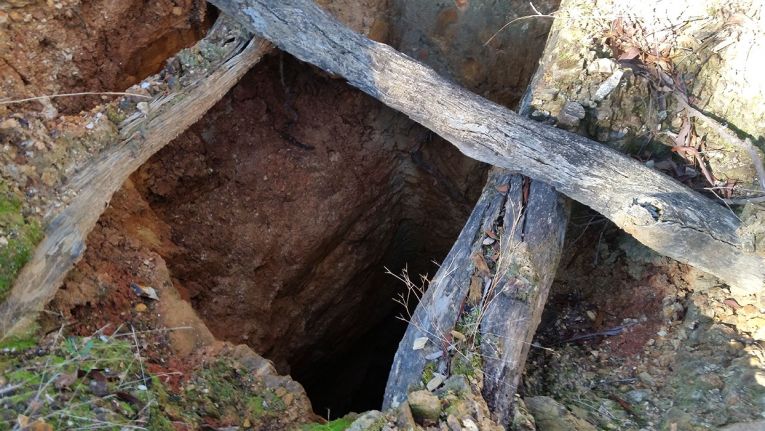



- Gypsy Road Mine Shafts - Bulldog Reef, Moliagul VIC (open mine shafts)
- Red, White and Blue Recreation Area, Muckleford VIC (capped mine shaft with poppet head)
- Chinese Diggings Historic Reserve, White Hills VIC (both rectangular and circular mine shafts)
- Forest Creek Historic Gold Diggings, Castlemaine VIC (both rectangular and circular mine shafts)
- Simson Historic Area, Havelock VIC (a great example of 'the diggings', lots of mineshafts packed closely together)
Mine adits




- Tunnel Hill Mine, Talbot VIC (locked gate, no entry but you can see in)
- Mt Tarrengower Tunnelling Company, Maldon VIC (locked gate, no entry but you can see in)
- Union Jack Mine (dangerous mine site, lots of open shafts, do not enter)
- Hard Hill Tourist Reserve, Wedderburn VIC (locked gate, no entry but you can see in)
- Eureka Reef, Chewton VIC (locked gate, but you can go a short way into the tunnel before reaching the gate)
Open cut mines




- Dunns Reef, Muckleford VIC (open cut, excavated an exposed quartz outcropping)
- Black Hill Reserve, Ballarat VIC (open cut and shaft mining)
- Union Jack Mine, Percydale VIC (open cut with adits and shafts)
- Miners Hut Ruins and Gold Diggings, Craigie VIC (small, narrow excavations along with mine shafts)
- There are lots of examples of small open cut excavations throughout the Craigie State Forest near Maryborough VIC
Hydraulic sluicing


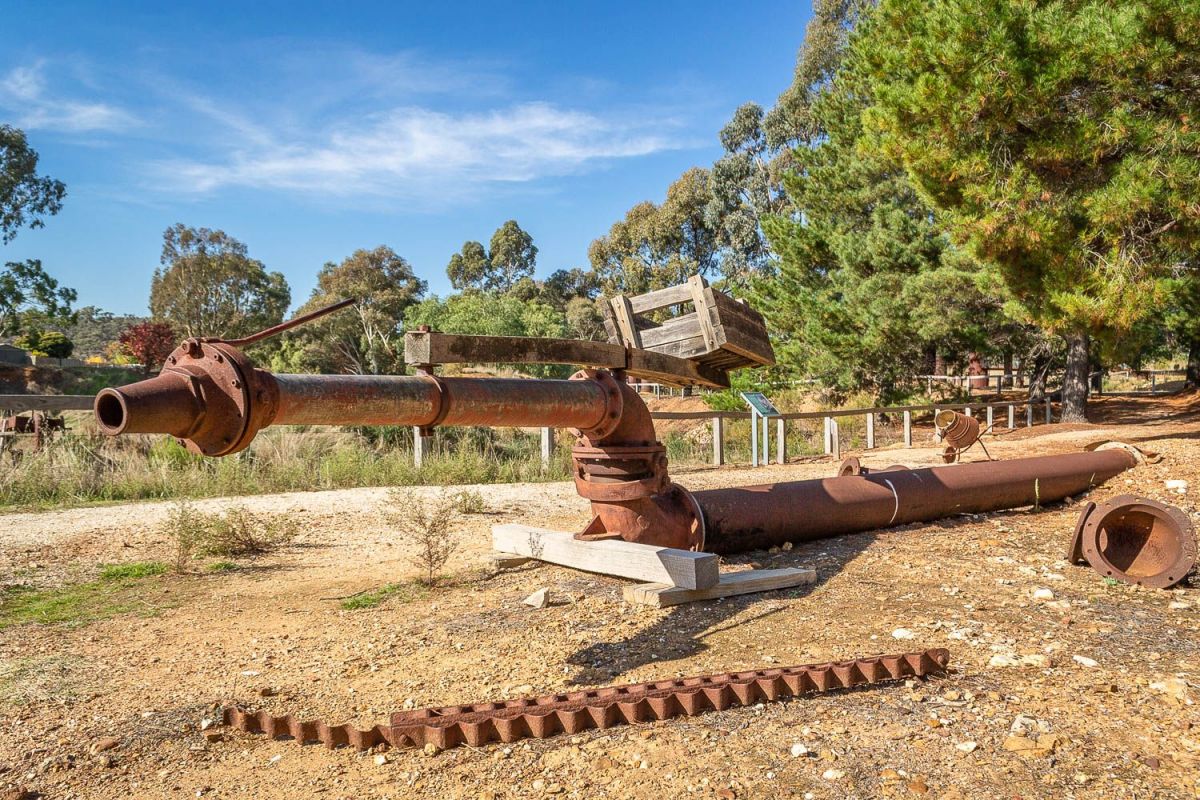
Water cannons were especially constructed for the purpose with several articulated joints to allow the jet of water to be directed to where it was required. On this site, Alf Cox used the water cannon in the following way:
- A jet of water from the cannon was directed on to the top of the cliff. The cliff was kept soaked for several days.
- The base of the cliff was then undercut with a very hard jet of water until it fell onto the bedrock shattering the falling rock.
- The nozzle was then directed onto the collapsed mass, washing the gravel to the pump or jet elevator which lifted gold, fine gravel and muddy water up to the sluice box.
The jet of water was sufficiently powerful to cut away the hardest soil. The force of the water was such that its roar could be heard three kilometres away and when it was working at night the quartz rocks would create great sparks of light as they violently smashed against each other.

- Pink Cliffs Geological Reserve, Heathcote VIC (striking example of the effect hydraulic sluicing has on the landscape, information signs)
- Forest Creek Historic Gold Diggings, Castlemaine VIC (lots of relics and information signs demonstrating the process)
- Red Knob Mining Landscape, Vaughan VIC (roadside lookout, hydraulic sluicing has dramatically altered the landscape)
Surfacing

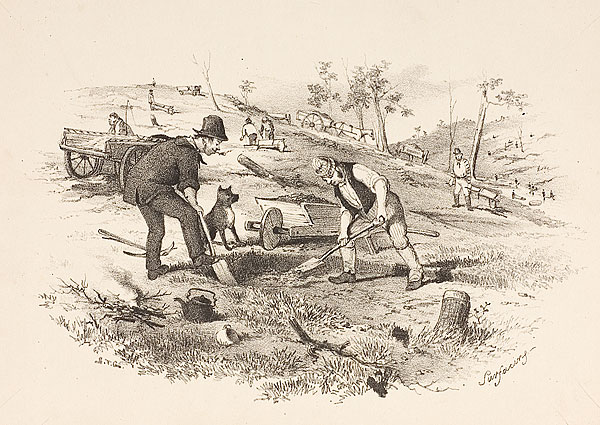
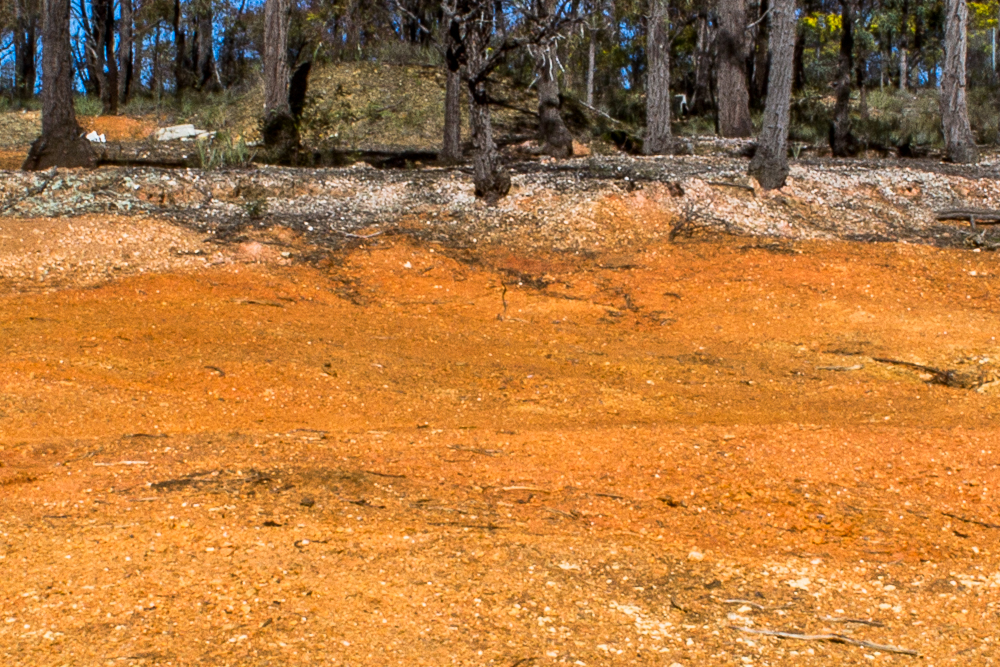
- Blackmans Lead, Maryborough VIC
- Welcome Stranger Monument and Picnic Area, Moliagul VIC (discovery site of the world's largest alluvial gold nugget, the Welcome Stranger)
- Wilson's Hill Nature Conservation Reserve, Marong VIC
Gold puddlers
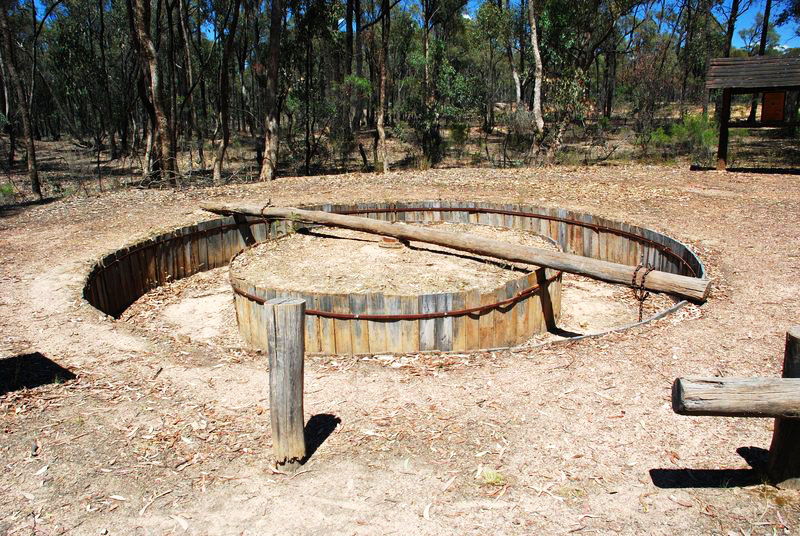
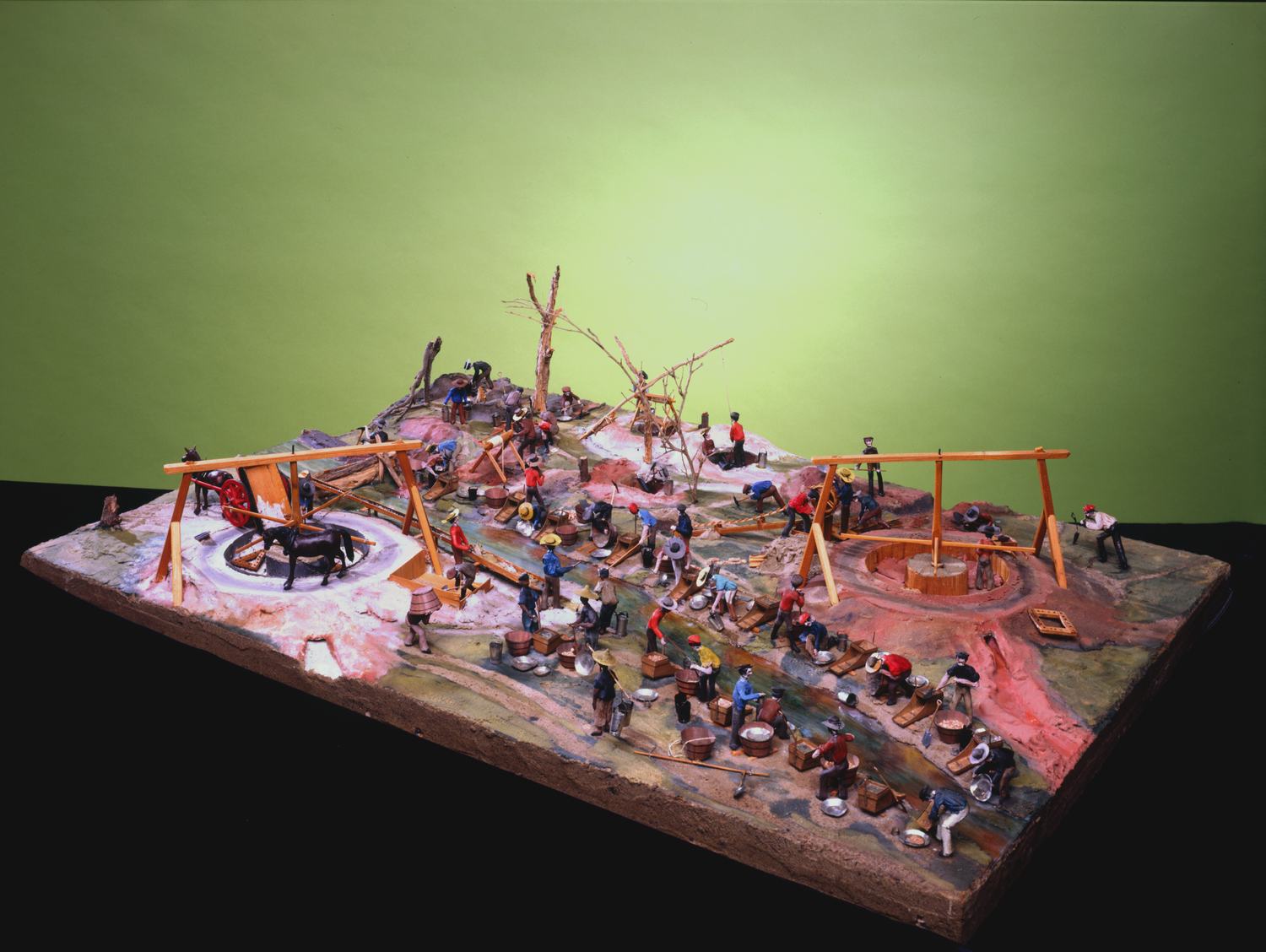


- Hard Hill Tourist Reserve, Wedderburn VIC (reconstructed gold puddler, excellent example)
- Battery Dam and Distillery, Daisy Hill VIC (remains of gold puddler with illustrated information sign)
- Gold Puddler on M114 Track, Daisy Hill VIC (remains of a gold puddler, good example of how they generally look out in the bush)
Stamp batteries



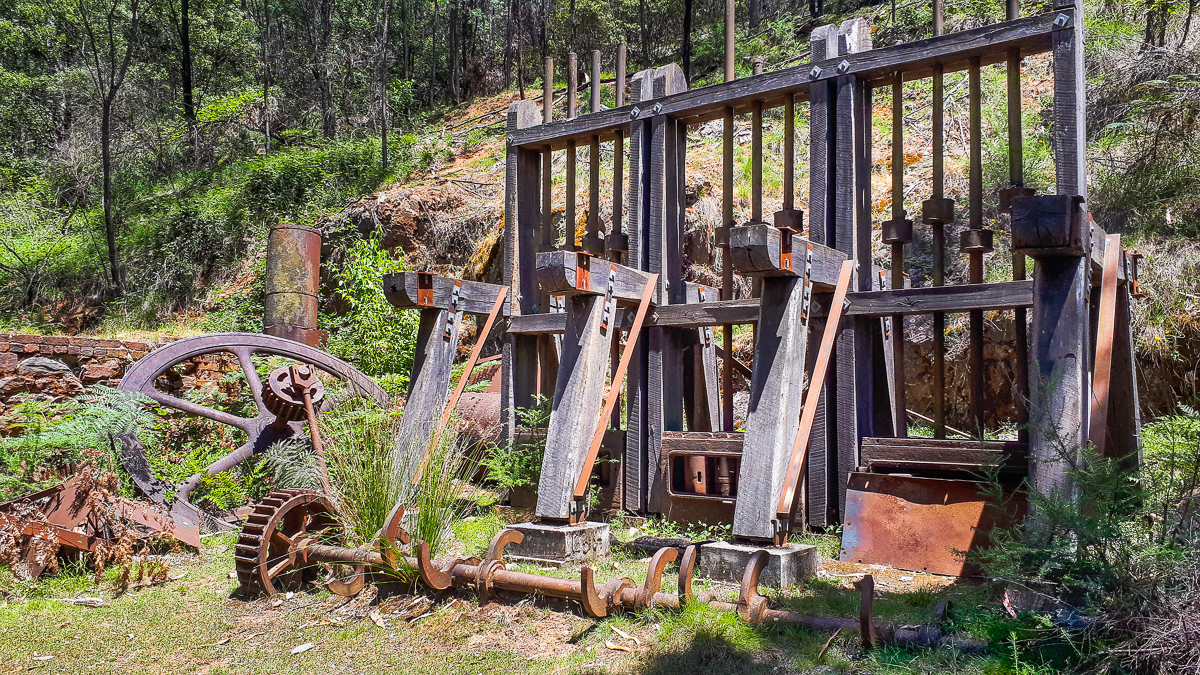

- Wedderburn State Gold Battery (Government battery)
- Creswick State Gold Battery (Government battery)
- Maldon State Gold Battery (Government battery)
- Victoria Hill, Bendigo VIC (impressive battery on display)
- Wallaby Mine Gold Battery, Beechworth VIC (abandoned, partially restored)
- Blackwood Park and Stamp Battery, Blackwood VIC (roadside display)
- Heathcote Stamp Battery, Heathcote VIC (roadside display)
- Battery Dam and Distillery, Daisy Hill VIC (battery gone, Cornish boiler still present, information sign indicates the spot where the battery used to be)
- Sovereign Hill, Ballarat (working stamp battery on display, demonstrations)
Boilers

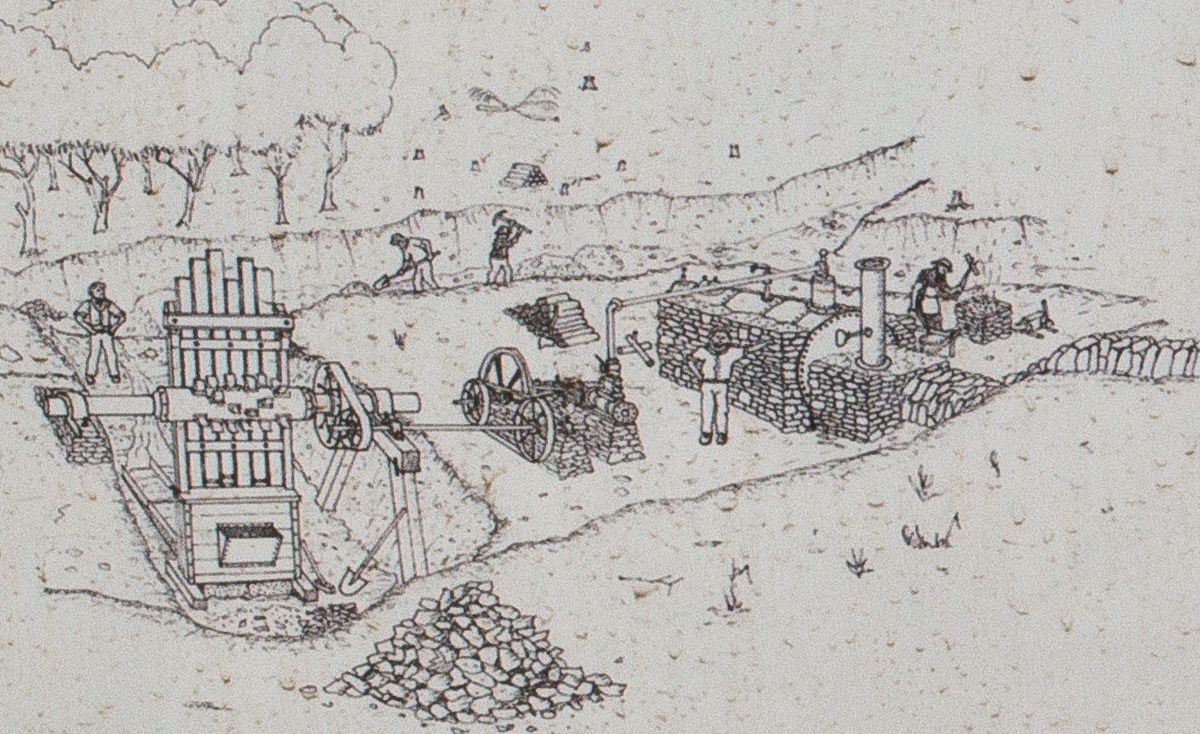




- Battery Dam and Distillery, Daisy Hill VIC (two boilers, one in a deteriorated stone setting. Used for a stamp battery then a eucalyptus distillery)
- Black Rock Road, Whipstick VIC (large boiler sitting on the ground)
- Ginger Adams Eucalyptus Distillery, Clunes VIC (boiler in brick setting, great condition)
Water wheel
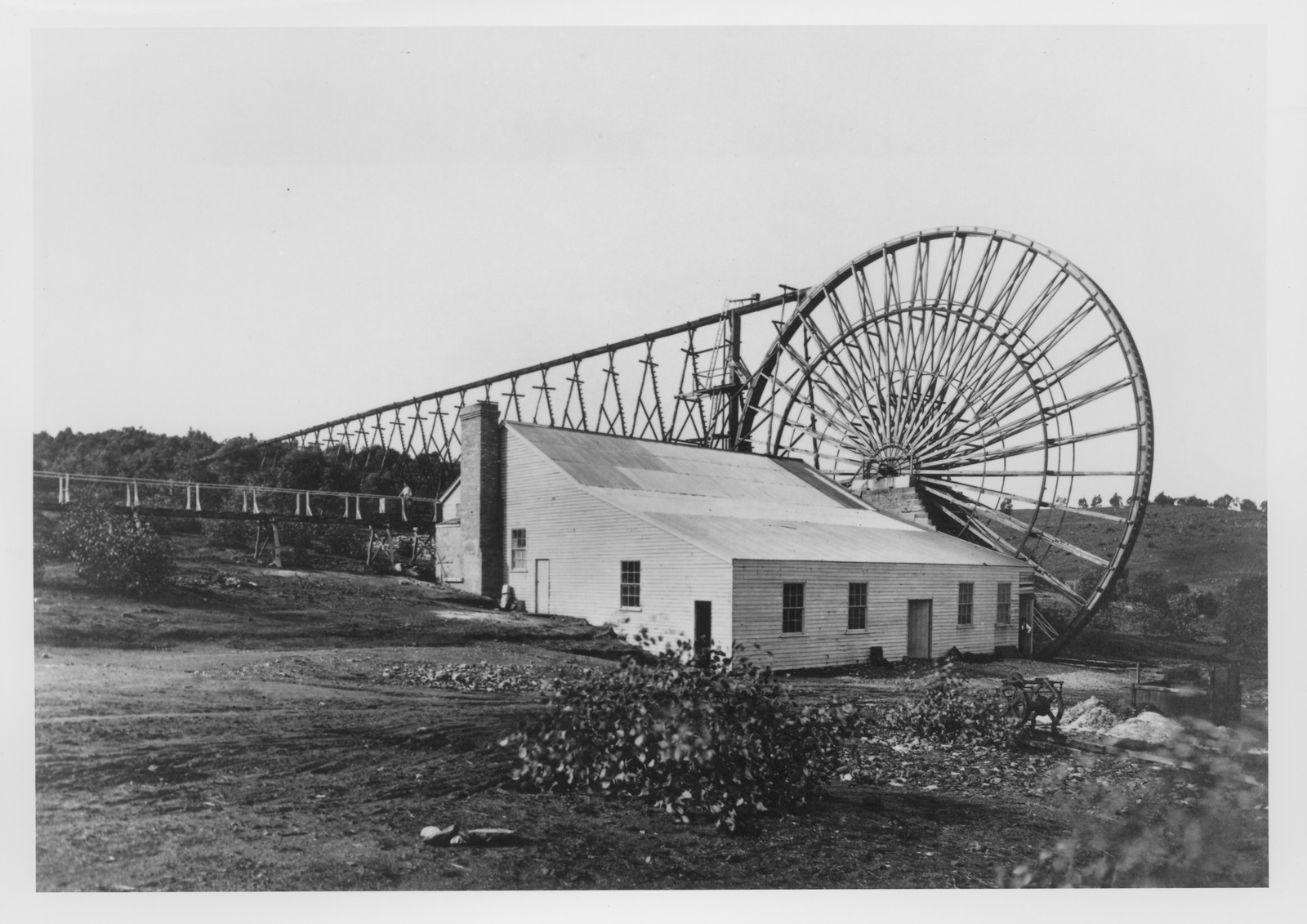


- Garfield Water Wheel, Chewton VIC
- Mopoke Gully Water Wheel, Campbells Creek VIC
Dredging



Operations began with the excavation of a basin in which a flat-bottomed barge or pontoon was built with a deck to support the dredge plant. Alternatively, the dredge could be launched from a river bank to operate directly in the stream. Machinery on deck was usually enclosed within a shed of galvanised iron, with a wood-fired boiler and steam engine powering machinery. Water was diverted or pumped from the river into the pondage to float the dredge, which consisted of an endless chain of large iron or steel buckets mounted on a long inclined frame or ladder fitted with rollers. The ladder was hinged at the rear end and supported by cables from a gantry above the deck of the pontoon at the front end, which allowed it to be raised or lowered to control the depth of the excavation face. The moving chain of buckets excavated and lifted alluvial material, with positioning of the pontoon controlled by winches and haulage lines anchored to land at the front and sides. In the early 1900s buckets varied from 4 to 6 cubic feet in capacity, lifting on average around 7400 cubic yards per week from a depth of up to 30 feet. Dredges of this scale could work about one acre per month.40 By 1910 steam-powered dredges ranged in cost from £3,000 to £8,000, the price increasing in proportion to their size and power.
Alluvial material from the buckets was tipped into a hopper and then passed through a perforated cylindrical rotating screen or trommel. Screens ranged from 18.5 to 33 feet in length and 6 to 12 feet in diameter, set at an incline or fall towards the stern. Perforations consisted of thousands of small holes up to 1/2 inch in diameter. The finer material (and gold) was washed by water from high pressure jets through the holes and onto sluice tables below. The larger, coarse material was delivered out of the lower end of the screen to a tailings elevator and stacked at the stern of the dredge as overburden. Gold saving tables used a variety of surfaces, including calico riffles, coconut fibre matting and wooden or iron slats on a wide, gently inclined table, to trap the gold. The riffles that created turbulence, winnowed the less dense waste mineral particles, separating them from the denser gold. Mercury was also employed at times to improve the rate of gold amalgamation, although the full extent of its use is uncertain.

- Porcupine Flat Gold Dredge, Porcupine Flat VIC (dredge and dragline remain)
- Eldorado Dredge, Eldorado VIC (massive dredge remains)
Whims
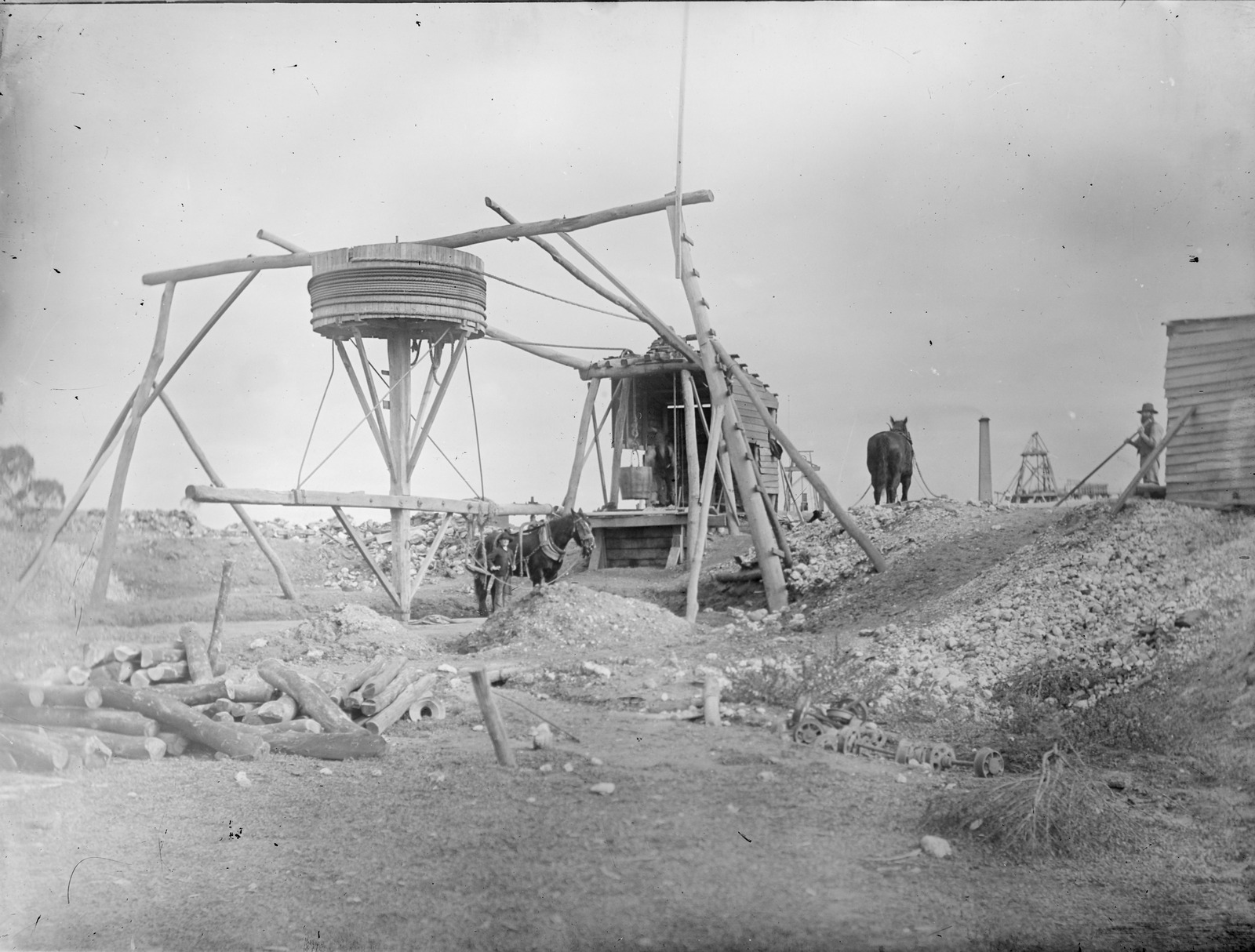


Water race


- Wilsons Hill, near Marong VIC
- Eureka Reef, Chewton VIC
Cyanide vats

Cyanide process, also called Macarthur-forrest Process, method of extracting silver and gold from their ores by dissolving them in a dilute solution of sodium cyanide or potassium cyanide.
The process was invented in 1887 by the Scottish chemists John S. MacArthur, Robert W. Forrest, and William Forrest.
The method includes three steps: contacting the finely ground ore with the cyanide solution, separating the solids from the clear solution, and recovering the precious metals from the solution by precipitation with zinc dust (source).


- Battery Dam, Daisy Hill VIC
- Cyanide Vats and Tailings Dump, Inglewood VIC
- Eureka Reef, Chewton VIC
- Jubilee Mine, Staffordshire Reef VIC
SEE ALSO
- Historical gold maps of the Victorian Goldfields
- Guide to gold prospecting in the Victorian Goldfields
- Where to look for gold in Victoria's Golden Triangle
- Places to prospect in the Victorian Goldfields
- Interactive map showing lots of places to prospect in the Victorian Goldfields
- Gold-bearing creeks and rivers in Victoria
- Gold prospecting maps for Victoria's State and National Parks
- Researching gold prospecting and history - online resources
- Surfacing in the Victorian Goldfields
- Gold shops, detector hire and gold tours in the Victorian Goldfields
- YouTube channels from the Victorian Goldfields
- Dangers of mine shafts in the Victorian Goldfields




